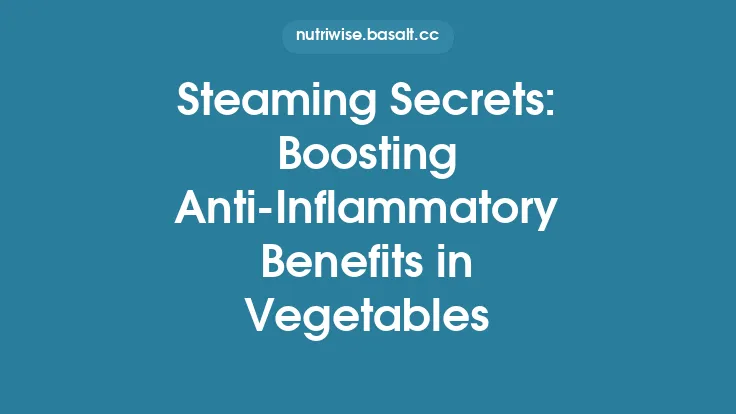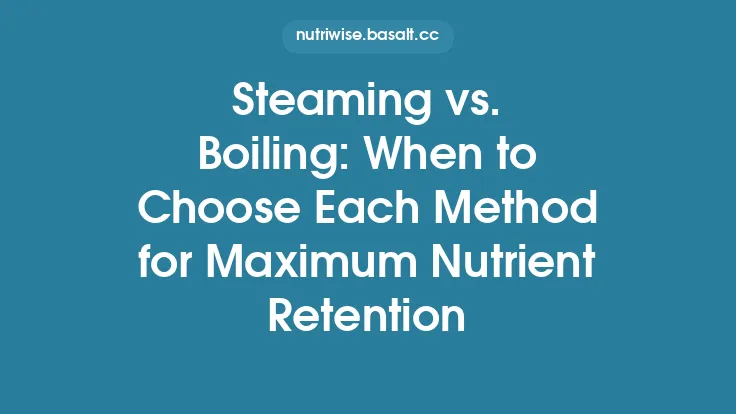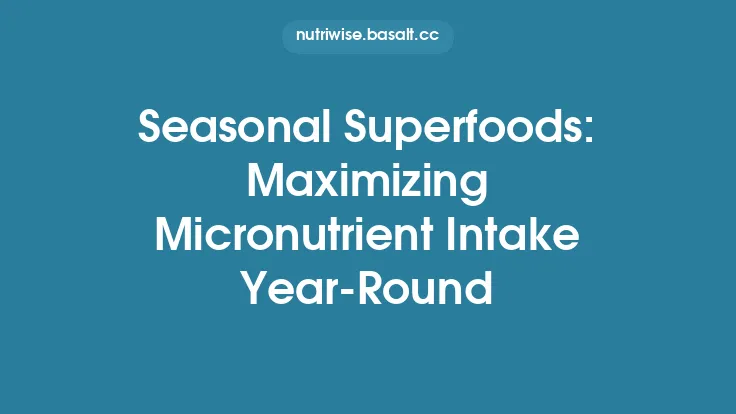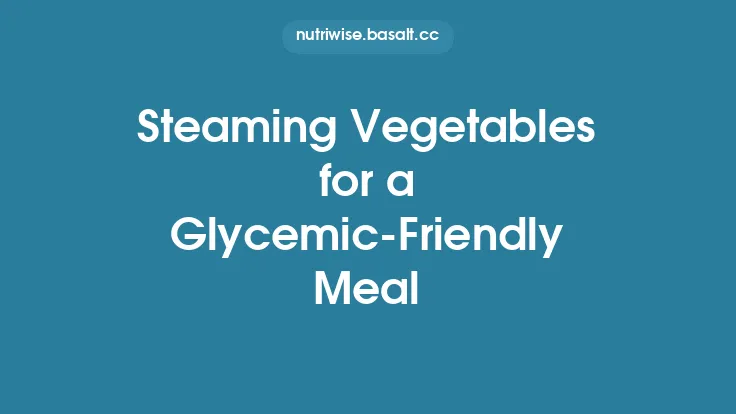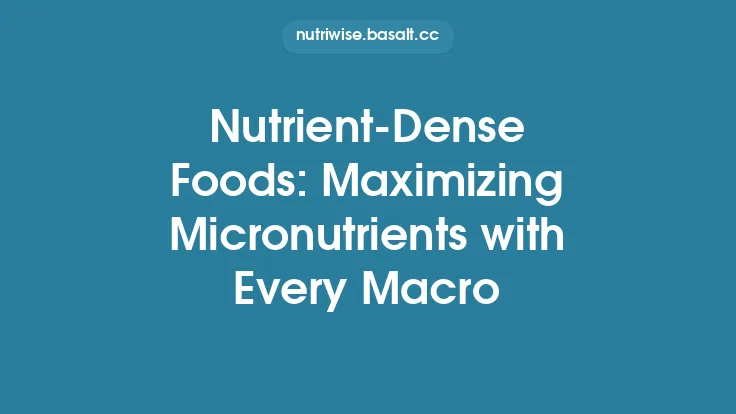Steaming is one of the simplest yet most effective ways to cook vegetables while preserving their natural vitamin content. By using moist heat that surrounds the produce rather than submerging it in water, steaming minimizes leaching of water‑soluble nutrients such as vitamin C and many B‑vitamins. Moreover, the relatively low temperature range (typically 95 °C–100 °C) and short exposure times help protect heat‑sensitive phytonutrients, making steaming a cornerstone technique for anyone seeking to maximize the nutritional payoff of their plant‑based foods.
Why Steaming Protects Vitamins
Limited Water Contact
When vegetables are boiled, water-soluble vitamins dissolve into the cooking liquid, which is often discarded. In steaming, the vegetables sit above the water, so only a thin film of condensate touches the surface. This dramatically reduces the amount of vitamin that can be washed away.
Gentle Temperature Profile
Most vitamins begin to degrade noticeably above 70 °C, with the rate of loss accelerating as temperature rises. Steaming maintains a temperature just below the boiling point of water, providing enough heat to soften cell walls without exposing the produce to the higher temperatures found in roasting or sautéing.
Short Cooking Times
Because steam transfers heat efficiently, vegetables reach the desired tenderness quickly. The shorter the exposure, the less time oxidative enzymes have to break down vitamins. For example, broccoli florets become tender in 4–6 minutes, whereas the same texture might require 8–10 minutes of boiling.
The Science of Vitamin Stability in Steam
| Vitamin | Sensitivity to Heat | Water Solubility | Typical Loss in Steaming* |
|---|---|---|---|
| Vitamin C (ascorbic acid) | High | Water‑soluble | 5–15 % |
| Thiamine (B1) | Moderate | Water‑soluble | 5–10 % |
| Riboflavin (B2) | Moderate | Water‑soluble | 2–8 % |
| Folate (B9) | High | Water‑soluble | 5–12 % |
| Vitamin K | Low | Fat‑soluble | <2 % |
| Carotenoids (β‑carotene, lutein) | Moderate | Fat‑soluble | 5–10 % (enhanced with a drizzle of oil) |
\*Values represent average losses reported in peer‑reviewed studies when vegetables are steamed for optimal times.
The table illustrates that, while no cooking method can preserve 100 % of every vitamin, steaming consistently yields the lowest losses among common moist‑heat techniques.
Choosing the Right Steamer
Basket‑Style Steamer
A perforated metal or silicone basket placed over a pot of simmering water is the classic setup. The basket should sit just above the water level to avoid direct contact. Stainless steel baskets are durable and easy to clean, while silicone inserts are gentle on delicate greens.
Electric Steamer
Standalone electric units provide precise temperature control and often include multiple tiers, allowing simultaneous cooking of different vegetables. Look for models with a built‑in timer and a “keep‑warm” function to prevent overcooking.
Microwave Steamer (Separate from Microwave Cooking)
Specialized microwave‑safe containers with a vented lid can generate steam quickly. When using this method, add only a tablespoon of water and cover loosely to allow steam to escape. This approach is useful for single‑serving portions but should be distinguished from broader microwave cooking techniques.
Preparing Vegetables for Maximum Retention
- Wash Gently, Don’t Soak
Rinse vegetables under running water to remove soil and microbes. Prolonged soaking can leach water‑soluble vitamins, especially in leafy greens.
- Cut Uniformly
Consistent piece size ensures even cooking. Larger pieces retain more heat internally, reducing the time needed for the outer layers to soften and thereby protecting interior nutrients.
- Avoid Pre‑Blanching
Since blanching involves a brief boil, it can already cause some nutrient loss. For steaming, go directly from raw to steam.
- Consider Pairing with a Small Amount of Fat
Adding a teaspoon of olive oil or a pat of butter after steaming can improve the bioavailability of fat‑soluble vitamins and carotenoids without compromising the low‑fat nature of the method.
Optimizing Steaming Times by Vegetable Type
| Vegetable | Ideal Steam Time | Indicator of Doneness |
|---|---|---|
| Asparagus spears | 3–5 min | Tender yet crisp tip |
| Broccoli florets | 4–6 min | Bright green, fork‑tender |
| Carrot slices (½‑inch) | 5–7 min | Soft edge, firm center |
| Green beans | 4–6 min | Bright color, slight give |
| Spinach leaves | 2–3 min | Wilted, still vivid green |
| Sweet potatoes (cubed) | 8–10 min | Easily pierced with a fork |
| Cauliflower florets | 5–7 min | Soft but not mushy |
Testing for doneness with a fork or tasting a small piece is the most reliable method. Over‑steaming not only degrades texture but also accelerates vitamin loss.
Enhancing Nutrient Absorption Post‑Steaming
- Acidic Boost
A splash of lemon juice or a drizzle of vinegar can increase the absorption of certain minerals (e.g., iron) by lowering the pH of the digestive environment.
- Herb and Spice Infusion
Adding fresh herbs (parsley, cilantro) or spices (turmeric, black pepper) after steaming introduces additional antioxidants without exposing them to heat, which can degrade some volatile compounds.
- Cold‑Shock (Optional)
For salads or dishes where a crisp texture is desired, briefly immersing steamed vegetables in an ice‑water bath halts cooking instantly. This “shocking” step preserves color and texture while keeping nutrient loss minimal, provided the vegetables are not left in the water for an extended period.
Storing Steamed Vegetables
Proper storage extends the nutritional benefits beyond the immediate meal:
- Cool Quickly
Transfer steamed vegetables to a shallow container and let them reach room temperature within 30 minutes. Rapid cooling limits enzymatic activity that can degrade vitamins.
- Refrigerate in Airtight Containers
Store at 1–4 °C. Use containers with minimal headspace to reduce oxidation.
- Consume Within 2–3 Days
Vitamin C and folate begin to decline noticeably after 48 hours, even under refrigeration.
- Reheat Gently
When reheating, use a brief steam or a low‑heat oven (≤ 150 °C) for 2–3 minutes. Avoid microwaving for extended periods, as uneven heating can cause localized nutrient degradation.
Common Pitfalls and How to Avoid Them
- Too Much Water
If the water level touches the basket, vegetables will boil rather than steam, leading to greater vitamin loss. Keep the water just below the perforations.
- Covering Too Tightly
A tightly sealed lid traps condensation, which can drip back onto the vegetables and cause them to sit in their own juices, effectively boiling them. Use a lid with a small vent or lift it slightly during the final minute.
- Overcrowding the Steamer
Stacking vegetables in a single layer ensures steam circulates freely. Overcrowding creates pockets of stagnant air, resulting in uneven cooking and longer exposure times.
- Neglecting the Timing
Relying solely on visual cues can be misleading; a bright green color does not guarantee optimal nutrient retention. Use a timer calibrated to the recommended times for each vegetable type.
The Environmental and Practical Advantages of Steaming
Beyond nutrition, steaming aligns with sustainable cooking practices:
- Energy Efficiency
Steaming requires only a modest amount of water and can be completed on a low to medium flame, reducing gas or electricity consumption compared with methods that need higher heat.
- Minimal Waste
No cooking liquids are discarded, and the only by‑product is the occasional steam condensate, which can be collected and used to water plants.
- Versatility
The same equipment can handle a wide range of produce, from delicate leafy greens to dense root vegetables, making it a space‑saving solution for small kitchens.
Quick Reference Guide: Steaming Checklist
- ☐ Choose a clean, appropriately sized steamer (basket, electric, or microwave‑safe).
- ☐ Add just enough water to generate steam without touching the food.
- ☐ Cut vegetables uniformly; wash but do not soak.
- ☐ Set timer according to vegetable type; start counting once steam is visible.
- ☐ Check doneness with a fork or taste; remove promptly.
- ☐ Optional: toss with a small amount of healthy fat, acid, herbs, or spices.
- ☐ Cool quickly, store airtight, and consume within 48 hours for peak vitamin retention.
By adhering to these principles, steaming becomes a reliable, nutrient‑preserving method that fits seamlessly into everyday cooking routines. Whether you are preparing a quick weekday side dish or a batch of vegetables for meal‑prep, mastering the nuances of steam will help you deliver meals that are not only delicious but also maximally nutritious.
